Concealed means hidden. It is not difficult to hide a handgun from the casual observer with carefully selected clothing, a sturdy belt and a well-designed holster. The keyword in concealed carry is “carry”. The best pistol and holster in the world won’t help you if they are locked up in a safe at home.
You may be carrying now, maybe you have carried for years. With recent innovations in guns, ammunition, and holsters, you should be aware that there may be something out there much better than what you have now. If you are just using what you always had, something as simple as a low-cost holster upgrade could make you safer and more comfortable.
When I got my first law enforcement job, my Uncle called me over to his house and gave me a 5-shot .38 revolver. He had seen bad things in Cambodia and Vietnam and wanted me to be prepared, “It is a good belly gun. You need a hideout in case things go wrong.” I never had to use a back up in a fight, but there were times that it provided the comfort of preparation. A backup gun is only valuable if it can be hidden.
There is a tactical advantage to concealment. I don’t want to be perceived as a threat by bystanders as a courtesy. I don’t want evildoers to know I am armed until I am prepared to act. They may launch a pre-emptive attack and catch me off guard. I want to remain the un-noticed grey man and evaluate my options.
The first step to carrying concealed is to know the applicable rules. There are overlapping federal, state and local laws as well as employer policies and location-specific rules. In some areas carrying a concealed weapon is a felony, this is a pretty good indicator of the state of civil rights in a given area. You may need to relocate if you want to protect yourself.
When selecting a pistol for concealed carry, the single most important characteristic is thickness. As a general rule, you should pick the thinnest, shortest pistol in an effective caliber that you can shoot well. You may have to make a compromise between caliber and concealability. While there are endless arguments about caliber, most knowledgeable shooters agree that the minimum effective calibers for self-defense are 9mm / .38 caliber.
Selecting a gun is like picking a pair of shoes. You have to look at what you want them to do and you have to get the right size. For carry, small guns are appealing but they are harder to shoot. I suggest that you start at the range. A little research will save you a lot of money down the road.
If you have friends with guns, shoot their guns. Many ranges offer rental guns. This is the only way to see if the gun fits and how you interface with it. Recoil management can’t be anticipated in dry practice and manipulation. The more you shoot, the more you know.
Early on in this process, you should get some training. Finding a qualified trainer can be challenging. The former military guy who teaches rifle classes may not have the background to teach concealed carry. The NRA has an excellent new Concealed Carry class. It provides a national standard and covers key topics like situational awareness, modes of carrying and post-shooting considerations.
The first choice you have is a revolver or semiautomatic. Before you say “Whoa Grandpa, I want a gun made in this century,” you need to look at current models with an open mind. Revolvers are small, reliable and offer some advantages in close fights. Reloads are slower but speed loaders and speed strips can help. Some shooters prefer to double-action trigger under stress.

Semi-automatics are thinner making them generally easier to conceal than revolvers. The slide has to be cycled to load and it can be pressed out of battery in a fight preventing a shot. Autos are prone to feeding malfunctions but faster to reload.
Fit is more important than size. If you can’t shoot confidently & effectively nothing else matters. The caliber also plays a role here. There are shooters, like Secret Service Agents and Sky Marshals who conceal full-size handguns every day. While some people can pull this off, it makes concealment very challenging.
The weight of your gun and reload is a factor. Large ammunition capacity is great but heavy things sag and make carry tiring after many hours. There are some who say that carry shouldn’t be comfortable but there has to be compromise. Even a large shooter will find that the weight and bulk of a full-size gun and reloads are challenging. With so many sub-compact 9mm guns and 5-shot revolvers available, there are a lot of good choices that are easy to carry.
The SIG365XL represents a new category of thin compacts with the sight radius and feel of mid-size guns and the thin profile of sub-compacts. Accuracy and terminal effects are enhanced along with greater magazine capacity.
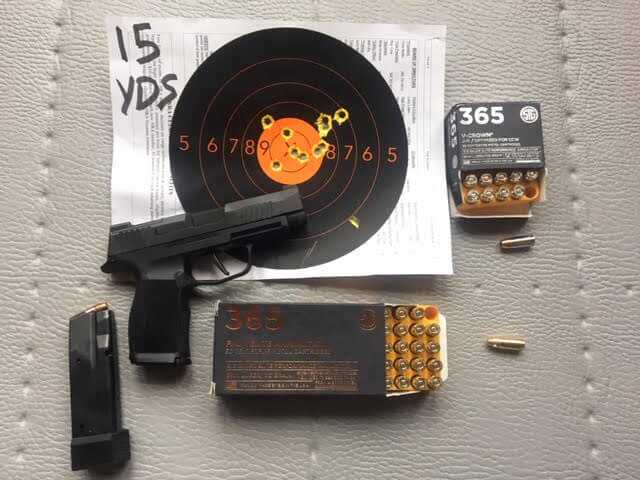
A second important factor is a functional reliability. Major manufacturers have a great track record but when you find a gun that fits, you need to train and put enough self-defense rounds through it that you are confident that YOUR gun will work every time with no surprises. I have had great luck with used guns but make sure you know what you are getting. Test fire is more important than manufacturer or previous owners.
The more popular guns have better availability of holster parts, service and aftermarket accessories. Perhaps the most valuable aftermarket addition is sights. I found the Glock 43 greatly improved with XS F8 high visibility sights.
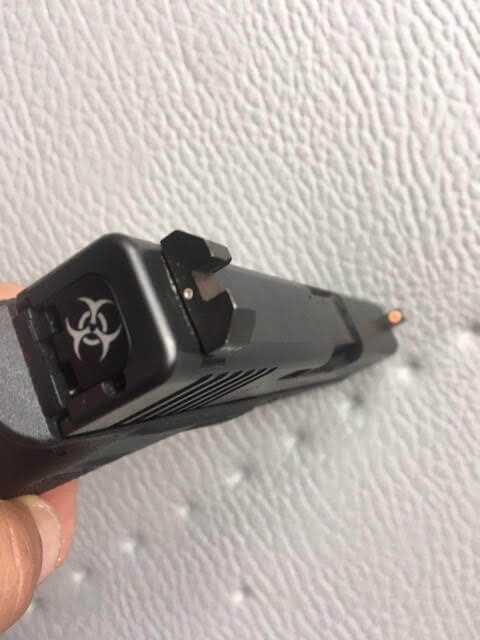
Some models may have unique magazines. When you buy your gun, get enough magazines to last a lifetime of carrying and training. I recommend at least four magazines. I own handguns that are no longer made and some magazines are hard to come by. That means expensive. New laws may also affect availability. I have never regretted having extra magazines.
One of the biggest challenges with concealed carry is training. Many ranges will not allow you to draw from the holster and many shooters have limited range availability. A laser trainer like the SIRT can provide endless training with complete safety. The Pocket Pistol Model has features that are similar to many compact pistols. Select one of three grip extensions to match your carry gun.

The SIRT has an adjustable resetting trigger for endless dry practice with realistic trigger feel. You can draw and get feedback on muzzle alignment anywhere with absolute safety. Go to nextleveltraining.com and use Discount Code “GreenBeret” (not case sensitive) to get 10% off a new SIRT.
With a CO2 powered BB trainer, you can get recoil and hit feedback. Make any garage or basement an indoor range and practice 24/7. SIG’s AIR P365 is perfect for training this size gun.
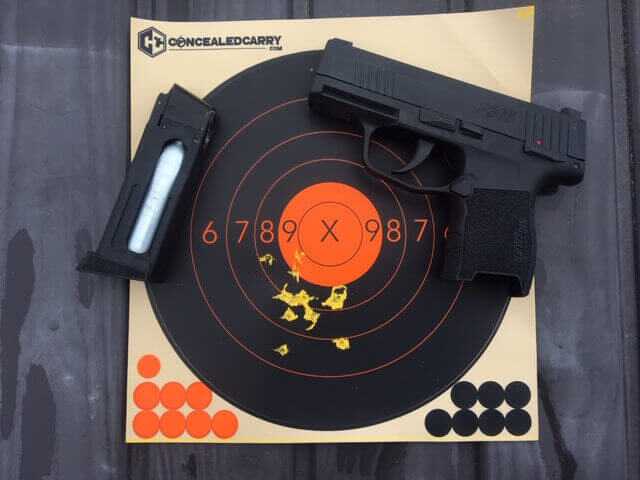
This trainer is no toy. It is a realistic replica matching the size and weight of the pistol. The functioning drop-free magazine houses a 12-gram CO2 cartridge and 12 BBs. It mimics the P365’s trigger and controls and the blowback-action slide locks open after the last BB is fired.
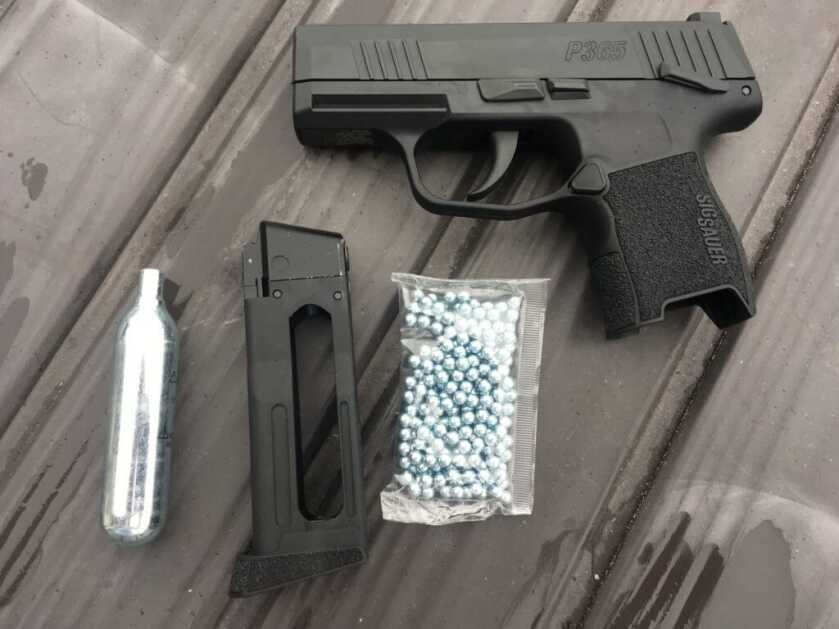
Now that you have a gun, you need a carrying device. There are a dazzling array of choices involving a compromise between concealment and access. Depending on your situation, you may need several different devices as circumstances and wardrobe change. You can’t just throw a holster in your skinny jeans. You have to dress for carrying.
Carry devices offering deep concealment will not afford optimum access. The ability to grip the firearm quickly depends upon the pistol’s location on the body. Quick presentation of the firearm from the carry device is a function of good design. You have to sort through the trade-offs for your application.
We live in a golden age of concealed carry. With so many states allowing the exercise of Second Amendment rights, innovation in the free market has produced a variety of low-cost carry devices for any situation. New guns and ammunition specifically designed for concealment have changed everything for the better.
Any pistol carry device; holster, pocket holster, off-body carry, etc. must provide concealment, access, retention, and comfort. The essential function of carry devices is to cover the pistol’s trigger. This prevents inadvertent activation of the trigger during presentation or carry. Carrying a gun naked in a waistband or uncontained in a pocket, handbag or briefcase is reckless.
Concealment is critical, but without access it is worthless. You must be able to get to your gun immediately when needed. Access involves two components: establishing a correct grip and presenting the firearm. Your choice of carrying must allow both to be done quickly and smoothly as possible.
A gun that is carried and drawn from under clothing should have all sharp edges smoothed and projections removed. Grips made of soft rubber should be avoided, as they tend to drag and stick to clothing slowing presentation.
Carry devices must also provide retention to properly secure and position the gun in the device. This has two components, keeping an assailant from taking your gun and retaining it while running, jumping or bending. Concealment is the first component of retention. If an attacker can’t see it, they can’t take it.
A holster positions the gun on the body, leaving both hands free. Holsters are the most common pistol carry devices and probably best under most conditions. Well designed holsters position the gun in a consistent manner.
A snug-fitting holster molded to the specific gun will hold the gun tight against the body for maximum concealment. A fitted holster allows good retention without the need for a retention strap will provide a fast simple draw. Some holster designs are flatter than others. Longer holster designs minimize the bulge of the gun.
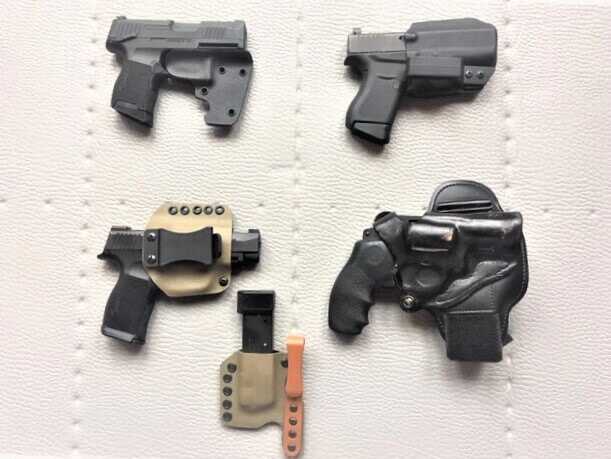
Holsters will conceal a handgun under appropriate clothing. The most popular holster designs are Pocket holsters, Shoulder holsters, Ankle holsters and Waist Line Belt holsters worn in Appendix, Small-of-the-back, Cross Draw, and Dominant Side Hip positions.
Many companies like Tru Spec, 5.11, Blackhawk, and Propper are making low profile clothing specifically designed for concealed carry. When selecting clothing for concealed carry, your clothing should fit the climate and the circumstances. If you wear tactical pants and a jacket at the water park when everyone else is in shorts and T-shirts, you are not effectively concealed.
Loose clothing generally provides better concealment than a tight fit. Dark colors and irregular patterns are better than light colors or regular patterns. Thick fabric does not allow a gun to print through as readily as thin clothing.

An often overlooked factor in choosing a carry device is comfort. It is not a small thing, you are more likely to carry your gun if it is comfortable to wear. You are much more likely to draw smoothly and quickly from a holster that comfortably fits your body. If discomfort causes you to fidget and frequently check or adjust your gun, it draws the eye. An uncomfortable carry can make you move in an unnatural manner drawing attention to you and your gun.
Experimentation is the only way to find what is right for you. There are a number of devices which hold your gun for Off Body Carry. While this is the most comfortable, if you can’t touch your gun, you may not be able to deploy it or protect it.
Holster purses and messenger bags have become more popular for concealed carry. The best holster purses/messenger bags for pistol carry are those designed expressly for that purpose with metal-reinforced straps that resist cutting, a separate, dedicated gun compartment with an internal holster or retention straps to hold the gun in position for a proper grip and easy-access closures for that compartment. Support-side shoulder carry is most secure and accessible. If you commit to this carry, you can’t put your purse/bag down.
There are holsters which mount to cars and furniture. These may be useful in very specific situations but if you must move you have to have another carry option. You can not safely leave a gun just hanging around.
After your choices are made, the final step in concealed carry is testing for concealment, retention, access, and comfort. Please test your carry with an unloaded pistol. Use a full-length mirror or better yet, two mirrors, to evaluate concealment from different angles. Get a knowledgeable friend to help you out, the guys at the gun store may lie to you.
Run, sit in your car, turn, bend, stoop and squat while wearing your gun to see if it prints or impedes movement. Bending or raising the arms over your head can cause a shirt or jacket to ride up several inches, revealing the bottom of a holster. Bending forward can also make the butt of a gun worn in a small-of-the back or hip holster stick out to the rear.
Test the retention of the pistol carry device by jumping, jogging and stretching to see if it will shift or fall out. Have a friend try to pull your unloaded firearm from various angles. Retention problems may require adjustment.
When everything works properly and feels right, dry practice your presentation (empty gun) wearing cover garments and time it. An elapsed time of more than two seconds is too slow for a practical gun. Test comfort by wearing it around your home for extended periods. Don’t take it on the road unless you are satisfied and legal.
Now that you have picked your gun and ammo, selected the optimum carry mode and practiced, you are ready to start training. Do your homework and find a competent instructor. Hit the street legally knowing what to do and how to do it without anyone seeing your gun until you are ready.
The only answer to the random violence of madmen is the righteous defense of life and liberty by armed good guys. Preparation is your best defense.


interesting article. Stating the caliber of the various pistols somewhere next to the photos would be helpful.
Thanks, I added the calibers.
Smith and Wesson shield all day. Most comfortable ccw ever.
“With so many states allowing the exercise of Second Amendment rights, ….”
Am I the only one to think that, if the government can allow or disallow exercising a Right, then it isn’t much of a right to begin with? Maybe rephrase the sentence to read “With so many States issuing a permission slip ….”.
Other than that one little Nit, I enjoyed the article.
The writing was deliberate and intentional. There are many states who block civil rights in direct violation of Constitutional guarantees. I agree with you that government infringement of civil rights of any kind is problematic. It makes the right no less valid.
You seem to be making a case for a revolver over a semi-auto.
“Revolvers are small, reliable and offer some advantages in close fights. Reloads are slower but speed loaders and speed strips can help. Some shooters prefer to double-action trigger under stress.”
“Semi-automatics are thinner making them generally easier to conceal than revolvers. The slide has to be cycled to load and it can be pressed out of battery in a fight preventing a shot. Autos are prone to feeding malfunctions but faster to reload.”
Revolvers malfunction as well, cylinders can lockup either from ammunition issues or from an assailant gripping the weapon. Speed loaders and speed strips require much more practice to use effectively and are prone to mishaps when using under pressure.
Semi-autos do have their own issues but modern, well made semi-autos are not prone to feeding malfunctions, they can occur but are unlikely. Semi-auto reloads do require practice but they are much easier and intuitive than revolver reloading.
You also didn’t mention the use of break open weapons derringers and similar. While limited in ammunition capacity they are very easy to conceal and use but they are only for very close in encounters.
Overall good starting information.
Many people do not consider revolvers as modern weapons. I believe they have a place and offer some advantages.
To the Author: Your article is probably the most easily understood summary I’ve read on the subjects covered: relevant, to the point, brief, and well rounded. I am in the process of rethinking both my carry weapon & holster. Thank you for taking the thought and effort to put this out (and without pushing a particular product or service). Well done – and Thank You for your service! Signed, “Just Another Vet”.
Thanks for the feedback.
Waist and belt concealment are well and good, and the subject of the article, I suppose. It all seems incomplete without talking about small-of-back carry, shoulder rig holster, ankle holster, etc. My preferred method of concealed carry involves a shoulder holster with compact .45 under left armpit, 2 extra 7rd mags under right armpit, but when I can get away with it during heavy jacket weather, I move up to a mid-frame for extra capacity per magazine. I agree that getting all the training you can manage is important, but with a massive caveat – only perfect practice makes perfect. I prefer training with simunition and a lighter recoil spring. Best of all worlds, it’s a less-than-lethal round, that gives you most of the same feedback, in the same capacity per magazine, and while it can get costly, it sure beats having a choke moment with real-deal ammunition.
Carry safe out there, my friends.